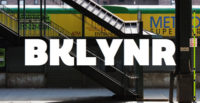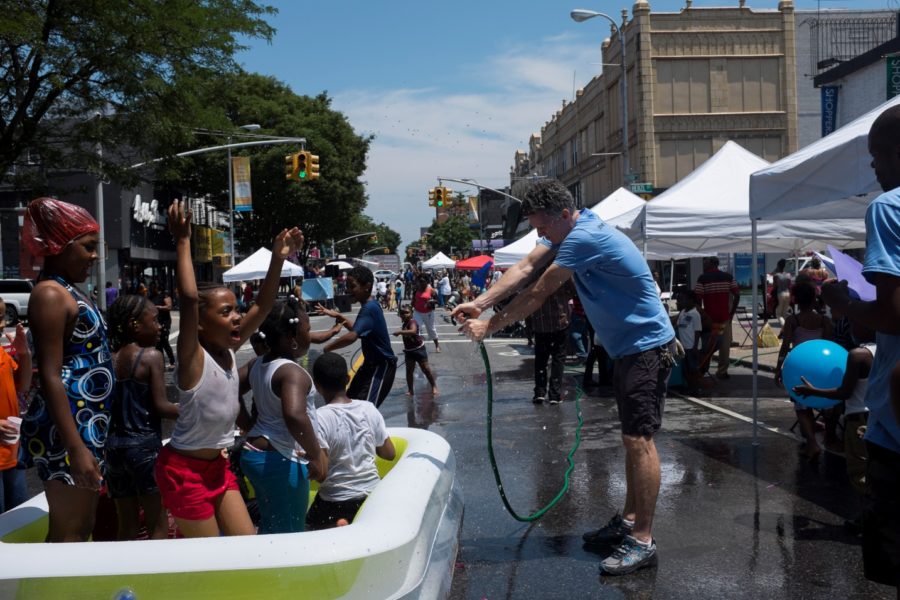
Rosanne Haggerty, the founder and president of a group called Community Solutions, a national nonprofit that seeks to alleviate homelessness in impoverished areas, says that Brownsville “is a community with an awful lot to work with,” despite whatever troubles persist. Haggerty, who is spearheading a key revitalization effort in Brownsville, gained renown in the nineties for her work in supportive housing with Common Ground Community, another social services organization she founded, which eventually earned her a MacArthur Foundation Fellowship, better known as the “Genius Grant.” One of her major projects with Common Ground was overseeing the renovation of a derelict hotel, the Times Square, transforming the building into a 652-unit homeless shelter with onsite counseling and medical services, along with a library, art studio, and rooftop garden.
In 2005, Haggerty and her staff were looking for a new pathway to ending homelessness, to get past the “same reactive mode of building more and more housing,” as she puts it. They began combing through a wealth of data that correlates with homelessness — welfare system involvement, incarceration rates, chronic disease, infant mortality — and found that there were only a handful of neighborhoods in New York that account for a majority of the city’s social distress. These neighborhoods are scarred by multi-generation struggles with entrenched poverty and crime. Brownsville not only ranked last on many of these social indicators, but it also lacked a strong, centralized social welfare organization that could help its residents.
Haggerty approached the Robin Hood Foundation, an anti-poverty organization bankrolled by hedge fund money, about working in one of these neighborhoods. It turned out that the foundation was interested in social services work in Brownsville, too. “There’s a phenomenon of these neighborhoods that are neglected and depleted, and don’t have a well-connected infrastructure to help people in times of crisis,” Haggerty says. She told the foundation she would like to help set up that infrastructure in Brownsville.
Community Solutions hit the ground with a typical community organizing approach: helping residents with practical matters like accessing government benefits and avoiding evictions. But Haggerty and her staff quickly realized that Brownsville lacked many of the institutions that can help residents sustain a higher quality of life over the long term: systems for early childhood support, alternative to incarceration programs, even budgeting courses.
“We realized that a different kind of approach would be needed to change the trajectory here,” Haggerty says. “The neighborhood lacked basically all of the ingredients of a safe, healthy, and prosperous community. No one program could close the gap.” And so in early 2008, Community Solutions launched the Brownsville Partnership, a community-wide, consensus-building organization, with the lofty aim of bringing into existence a healthy, prosperous neighborhood through grassroots organizing and networking.
Alarming rates of public assistance, incarceration, and homelessness are all symptoms of entrenched poverty, not root problems themselves, Haggerty explains. “Anyone who has lived in New York through its recovery from near-bankruptcy and disinvestment — who saw neighborhoods like Times Square, Harlem, and Williamsburg in the 1980s — knows that New York neighborhoods can be turned around. Brownsville has been neglected. That’s a big part of the reason it continues to struggle. The Brownsville Partnership is working to bring the same kind of steady investment, improved public services, and sustained, well-coordinated local action that has made such a difference in other communities.”
But gentrification does not seem forthcoming in Brownsville. Although the 3 and L trains run through the neighborhood, the density of the neighborhood’s public housing makes it an unlikely target for real estate developers. Brownsville has the greatest concentration of public housing in the country, with eighteen New York City Housing Authority developments. A third of the neighborhood’s approximately 60,000 residents live in public housing. This isn’t Williamsburg, Bushwick, or Bedford-Stuyvesant; there are no warehouses for artists to reconstitute as lofts and studios, no beautiful brownstones for families and young adults to move into.
Yet Brownsville’s sense of enclosure also protects it from the massive demographic upheavals caused by rapid influxes of wealth. Paradoxically, the prevalence of public housing and its distance from gentrifying neighborhoods could be one of the Brownsville’s greatest assets. It’s a place so isolated from the typical progression of urban revitalization that it can serve as a template for a different model of renewal — one, ideally, that can occur without the attendant disruption and displacement of unchecked development.




